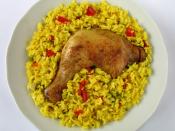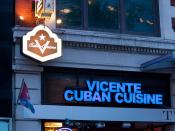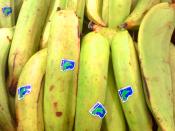Taste is universal and local as well: every culture has it own culinary biases, but all cultures celebrate taste. Our sense of taste is born and educated according to the culture we belong to. Cuban cooking is among the most interesting cuisines to be found in the world. Combining elements of traditional Spain with French, African, Arabic, Chinese, and Portuguese cultures, Cuban food provides a powerful link to island memories and traditions.
Most Cuban cooking relies on a few basic spices, such as garlic, cumin, oregano, and bay laurel leaves. The sofrito is what gives flavor to the food. The most common Cuban foods include pork, chicken, rice, beans, tomatoes and lettuce. The Spanish influence is apparent in the use of rice, lemons, and oranges. Yuca is a native root vegetable shaped like a large carrot that can be boiled or baked, and malanga is a large-leafed root vegetable.
A common dish offered at Cuban restaurants is carne asada (roasted meat), or puerco asado (roast pork), but nothing better than the home picadillo (ground beef), or arroz con pollo (chicken and rice). Ajiaco is another typical meat, garlic, and vegetable stew. Congri (white rice and black bean mixture also known as Moors and Christians) was introduced by French planters from Haiti.
A typical Cuban breakfast will consist of tostadas and cafe con leche. Tostadas are pieces of Cuban bread with butter. Cubans will dunk pieces of bread into their cafe con leche, as Americans will dunk doughnuts into their coffee. A Cuban breakfast might also include croquets, empanadas, pastelitos, or other Cuban Appetizers.
Lunch will consists of Medianoche (midnight sandwich), consisting of a slice of pork, ham, and Swiss cheese and then topped with pickles and mustard on sweetened egg bread. One may also order a side of fried...


